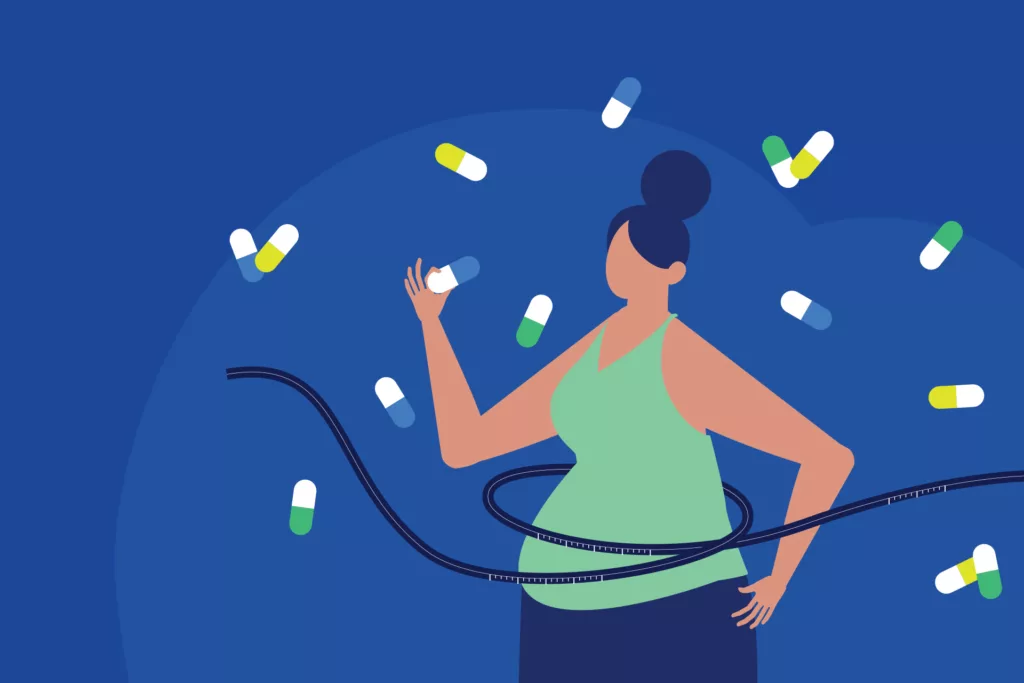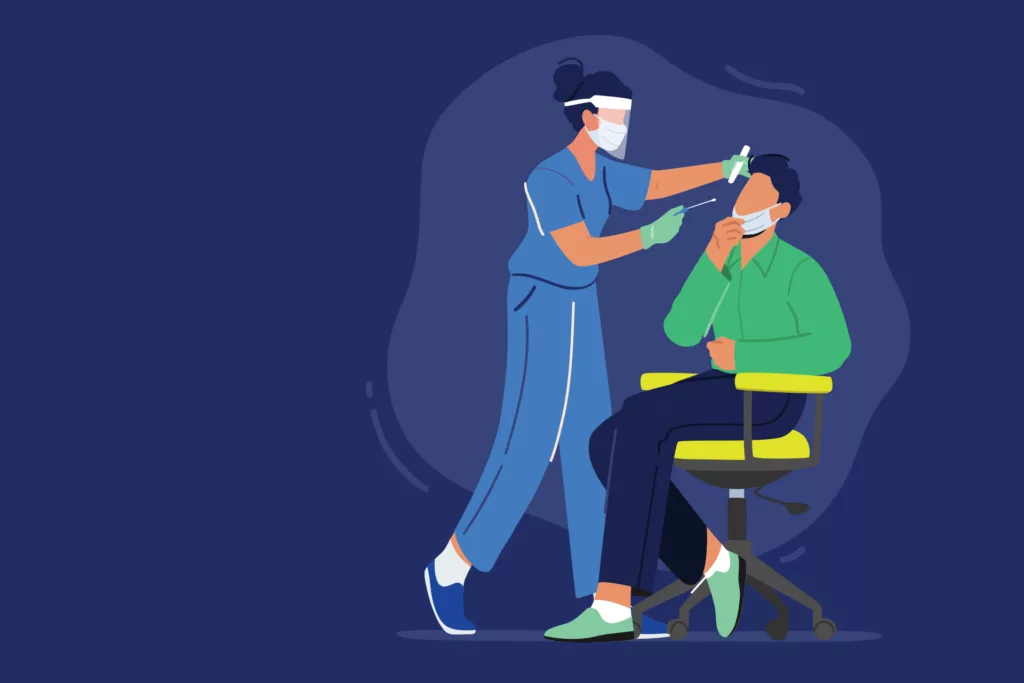Jason Peterson and RemedyOne EVP of clinical services Robert Louie have also written about Mounjaro for Pharmaphorum.
Man o’ War, Seabiscuit, Secretariat, Seattle Slew, Trulicity, Ozempic, Rybelsus, and Mounjaro. Racehorses and treatments for diabetes—all of which have a history of competing to be the best.
Just over 11% of the U.S. population currently has diabetes, with over 90% of those falling in the type 2 category. Patients diagnosed with type 2 diabetes mellitus have historically been treated with oral metformin as a first line agent to accompany both diet and exercise. Patients who are unable to achieve their blood glucose targets, who have cardiovascular disease, or who require weight loss will typically have additional medications added to their metformin regimen. Oral agents, such as a sodium-glucose cotransporter-2 (SGLT2) inhibitors (i.e., Farxiga, Invokana, Jardiance, Steglatro) or dipeptidyl peptidase-4 (DPP-4) inhibitors (i.e., Januvia, Nesina, Onglyza, Tradjenta), can easily be added. However, for some patients, injectables such as insulin or a glucagon-like peptide-1 (GLP-1) receptor agonists need to be utilized.
GLP-1 agonists have been on the market since 2005, beginning with the introduction of Byetta. The early market entries in this class started out as once-daily subcutaneous injections and have evolved into the current standard of once-weekly injections. There is also a once-daily oral GLP-1 agonist, Rybelsus, that contains semaglutide, the same active ingredient found in the injectable, Ozempic. In clinical trials, the GLP-1 agonists demonstrated that not only do they improve the body’s ability to control blood sugar, but they also help reduce weight and cardiovascular risk.
Competition is good
“Competition is not only the basis of protection for the consumer, but it is also the incentive to progress.” – Herbert Hoover
This quote can easily be applied to today’s pharmaceutical market. Unfortunately, not all drug manufacturers approach competition the same way. In fact, very few of them conduct head-to-head trials when attempting to bring a new product into a highly competitive market. Historically, most manufacturers have taken the safe route and only tested their drug candidates against a placebo.
Racing against air (or placebo) doesn’t prove you can be a champion, especially if you are entering a race with champions. A famous pro wrestler may have summed it up the best with:
“To be the man, you have to beat the man.” —Ric Flair
In other words, to be the best, you must compete against the best. Thankfully, those who suffer from type 2 diabetes are benefiting from the current competitive landscape and the focus on excellence within the GLP-1 agonist marketplace.
Over the past decade, two manufacturers in particular, Lilly and Novo Nordisk, have competed for clinical superiority and the top spot in the GLP-1 agonist market. Their head-to-head trials began in 2012, when Lilly took its game changing once-weekly injectable, Trulicity, against Novo Nordisk’s once-daily injectable, Victoza. Not to be outdone, Novo Nordisk unveiled its once-weekly injectable, Ozempic, and took on Trulicity in head-to-head trials a few years later. Novo Nordisk didn’t stop there. When it developed the first oral formulation of a GLP-1 agonist, Rybelsus, it went head-to-head with Trulicity once again. In all these epic battles, the challenger was proven to be as good as—or superior to—the legacy product. As a result, these challengers were able to grab a significant portion of market share, proving that the battle was not only a win for science, but also financially positive for the manufacturer.
Newest horse in the race
On May 13, 2022, the Food and Drug Administration (FDA) approved tirzepatide, branded as Mounjaro, Lilly’s newest addition to the diabetes market. Mounjaro is a first-of-its-kind dual-action medication that stimulates both the glucagon-like peptide-1 (GLP-1) and glucose-dependent insulinotropic polypeptide (GIP) receptors. This single molecule treatment can be self-injected subcutaneously into the abdomen, thigh, or upper arm once weekly as an adjunct to diet and exercise to improve blood sugar control in adults with type 2 diabetes.
Although Mounjaro’s mechanism of action as a dual GLP-1/GIP agonist is unique, it will compete in the GLP-1 class of drugs for now. The overall safety and tolerability profile of Mounjaro was similar to other therapies that stimulate GLP-1 receptors and are currently approved for the treatment of type 2 diabetes. Mounjaro’s most common side effects are nausea, vomiting, diarrhea, and other gastrointestinal problems which have been attributed to the similar drugs in the GLP-1 agonist class.
The annual cost of Mounjaro is $12,666 which is priced at a 9% to 10% premium over Ozempic and Trulicity, respectively. These two drugs would be Mounjaro’s main competitors in the once weekly injectable GLP-1 space. Note that Trulicity is made by Lilly, the same company that makes Mounjaro. Expect Lilly to provide additional payer incentives to package both drugs on their formularies.
Superior performance
The FDA approval for Mounjaro was based on a series of phase 3 studies which were part of the SURPASS clinical trial program. The program included five pivotal trials, which evaluated the efficacy and safety of Mounjaro as a monotherapy and as an add-on to standard therapies for type 2 diabetes. The various trials covered time periods ranging from 40 weeks to 52 weeks in length and included three different strengths of Mounjaro: 5 mg, 10 mg, and 15mg.
The primary endpoint for all the SURPASS trials was the change in HbA1c from baseline. The mean reductions in HbA1c ranged from 1.7% to 2.4% across all the SURPASS trials and varied according to strength and concomitant therapies.
In addition, a key secondary endpoint in the studies was the mean change in body weight. Across the SURPASS trial program, participants treated with Mounjaro had mean weight losses ranging between 12 and 25 pounds, depending on the strength of Mounjaro and co-administered medications.
The SURPASS-1 trial tested Mounjaro against placebo in patients with type 2 diabetes, who were inadequately controlled with diet and exercise alone, over 40 weeks. SURPASS-3 was a 52-week study comparing the efficacy of Mounjaro to insulin degludec in adults with type 2 diabetes, who were beingtreated with metformin, with or without an SGLT-2 inhibitor. The 52-week SURPASS-4 trial studied Mounjaro compared to insulin glargine in adults with type 2 diabetes, inadequately controlled with at least one and up to three oral antihyperglycemic medications, who have increased cardiovascular risk. SURPASS-5 was a 40-week study comparing Mounjaro to placebo in adults with inadequately controlled type 2 diabetes, who were already being treated with insulin glargine, with or without metformin.
Challenging the competition
Mounjaro went head-to-head with main GLP-1 agonist competitor, Ozempic, during the SURPASS-2 clinical trial. In this clinical trial, Mounjaro was shown to be better than Ozempic for lowering HbA1c and reducing body weight. SURPASS-2 was an open label, 40-week, phase 3 trial which randomized patients to receive once weekly injections of Mounjaro at a dose of 5 mg, 10 mg, or 15 mg or Ozempic at a dose of 1 mg. At 40 weeks, the mean HbA1c level with Mounjaro at a dose of 5 mg, 10 mg, and 15 mg was reduced by 2.01%, 2.24%, and 2.30%, respectively, compared to a reduction of 1.86% with Ozempic 1 mg. In addition, the mean body weight was reduced by 17 lbs, 21 lbs, and 25 lbs with Mounjaro at a dose of 5 mg, 10 mg, and 15 mg, respectively, as compared to 13 lbs with Ozempic 1 mg, at 40 weeks.
Simply stating Mounjaro is better than Ozempic is not as clear cut. This is due to the fact Ozempic now is available in a 2 mg dose which was not used as a comparator in SURPASS-2. Considering GLP-1 agonists tend to perform better at higher doses, it remains to be seen if Mounjaro 15mg would outperform Ozempic 2mg in a head-to-head trial.
The SUSTAIN FORTE trial, whose data was used in the recent FDA-approval for Ozempic 2 mg, pitted Ozempic 1mg vs Ozempic 2mg. The results showed the mean change in HbA1c from baseline at week 40 was a reduction of 2.2% with 2 mg and a reduction of 1.9% with 1 mg doses of Ozempic. In addition, there were mean reductions in bodyweight from baseline of 14.1 lbs with 2 mg and 12.5 lbs with 1 mg by week 40. However, when comparing the data from SURPASS-2 for Mounjaro 15 mg with the performance of Ozempic 2 mg in SUSTAIN FORTE, an argument could be made for Mounjaro to be crowned king of the GLP-1 class. Perhaps a clinical trial “battle royale” will eventually make that determination. Thankfully, the competing manufacturers are more than willing to take each other on.
Inspiring change
Lilly and Novo Nordisk are doing what many in the industry are afraid to do. However, it is abundantly clear more head-to-head battles like this are needed in the pharmaceutical marketplace. When multiple treatment options are available to patients, a head-to-head clinical trial can establish how well these treatments compare to each other. Prescribers and patients should have access to comparative data and not be forced to become part of the experiment after the drug is approved. Seeing more battles take place amongst pharma competitors within clinical trials, rather than inside the courtroom, would be a welcome sight for the healthcare industry.







